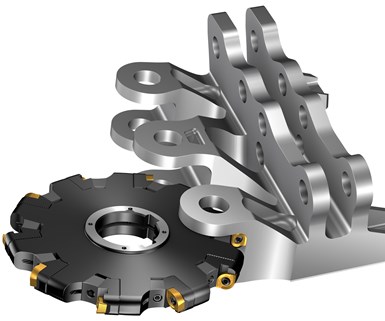Sandvik Coromant Introduces New Insert Geometries for Grooving
Sandvik Coromant has added the -M30 and -L50 insert geometry options for its CoroMill 331 milling cutter.
Share






Sandvik Coromant has added the -M30 and -L50 insert geometry options for its CoroMill 331 milling cutter. These periphery-ground additions are meant for light cutting in automotive and aerospace applications.
The -M30 geometry is designed for groove milling of steel and cast iron automotive parts. Available for size-11 inserts with radius dimensions ranging from 1.5 to 3.0 mm (0.059" to 0.118"), the insert geometry is characterized by its light cutting action, the company says. This geometry is said to be particularly beneficial for increasing security in weak setups or long-overhang applications. Grades available include GC1130, GC1020, GC3040 and GC4330.
The -L50 geometry is intended for machining of parts typical to aerospace and oil-and-gas applications. Offered for size-11 inserts with radius dimensions ranging from 3.0 to 6.3 mm (0.118" to 0.248"), light cutting action is said also to be the principal attribute of this geometry, making it suitable for materials such as stainless steel, nickel-based superalloys and titanium. Optimized for use in good operating conditions and heavy application areas, the available grade options include GC1040, GC2040 and S30T.
“Groove milling is one of the most common application areas within indexable milling, and the new geometries are specifically designed to meet the demands of machine shops looking to improve process security, quality and cost,” says Jenny Häll Jansson, the company’s global product manager for milling.
Related Content
-
Quick-Change Tool Heads Reduce Setup on Swiss-Type Turning Centers
This new quick-change tooling system enables shops to get more production from their Swiss turning centers through reduced tool setup time and matches the performance of a solid tool.
-
Indexable Drill Heads Double Profitability
Moving to a robust line of indexable drills enabled this shop to dramatically alter the manufacturing process for a problem part, doubling its profitability.
-
How to Troubleshoot Issues With Tool Life
Diagnosing when a tool is failing is important because it sets an expectation and a benchmark for improvements. Finding out why gives us a clue for how to fix it.















